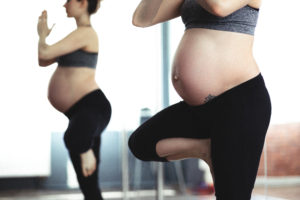 It is important that pregnant women understand the effects of their pregnancy on their bodies while participating in a Pilates class. The effect of pregnancy on a woman’s body can be profound, both internally and
It is important that pregnant women understand the effects of their pregnancy on their bodies while participating in a Pilates class. The effect of pregnancy on a woman’s body can be profound, both internally and
externally.
Pregnancy can affect the respiratory system, the cardiac and circulatory
systems as well as instigating hormonal, biomechanical and musculoskeletal
changes. These changes can lead to shortness of breath, tiredness, swelling,
varicose veins, postural changes, carpal tunnel symptoms, rectus diastasis
(separation of the abdominal muscles) and urinary incontinence. Women with very straight-forward pregnancies can still suffer lower back pain and pelvic joint pain.
Pregnancy & Pilates – First Trimester (1-12 weeks)
In the first trimester of pregnancy women often experience morning sickness and fatigue. It is
during this initial trimester that the risk of miscarriage is highest. Pilates is usually a
safe exercise to perform, but at a lesser intensity to avoid elevating the body
temperature and heart rate, as this can increase the risk of miscarriage. The amount
of ‘sit up’ abdominal exercises must be reduced. Instead, focus more on engaging
core and activation of the pelvic floor muscles.
Pregnancy & Pilates – Second Trimester (13-26 weeks)
Avoid all abdominal exercises. It is vital to avoid all abdominal work . During pregnancy, it is important to avoid strengthening the rectus abdominus. As the belly gets bigger, avoid tightening the
rectus as it will stretch and can cause a rectus diastasis.
Avoid inner thigh work,
because the adductors attach to the pubic symphysis (the pubic bone). As pregnancy advances women’s joints and ligaments loosen.The pubic bone starts to separate, which can be painful. When the pubic symphysis is already unstable any exercises that work the inner thighs can cause the pubic bone
to separate further.
Avoid prone positions (lying on the stomach) as lying on the stomach becomes very uncomfortable in the second trimester.
Avoid supine positions (lying on the back) as supine positions can be dangerous as they prevent oxygen being passed to the baby, as well as making many pregnant women feel dizzy or nauseous. This is
because the baby may press the main blood vessels as they exit the spine and
restrict blood flow.
Pregnancy & Pilates – Third Trimester (27 weeks to birth)
The baby’s increased growth can noticeably change the mother’s posture during the later stages of pregnancy. A lordosis-kyphosis posture becomes apparent. For Pilates, the second trimester guidelines continue; now ALL abdominal exercises as well as inner thigh work, supine and prone positions, must be avoided.
-
Other recommendations for exercising when pregnant include:
Maintain moderate intensity, as the body is already in an exercised state due to pregnancy-related cardiac changes.
- It is important for pregnant women to remain cool, as the baby is unable to regulate its own temperature.
- Drink lots of water, even after aquatic exercise
- Warm-up and cool-down thoroughly to avoid blood pooling and leg cramps.
Avoid wide lunge/stance positions, and unilateral exercises as this can put extra stress on pelvis. - Although it may be harder for the pregnant woman to feel, it is important to activate pelvic floor muscles during all exercises to maintain strength.
- Stop if the pregnant woman feels dizzy, becomes nauseous, or if there is vaginal bleeding or amniotic fluid leakage.

